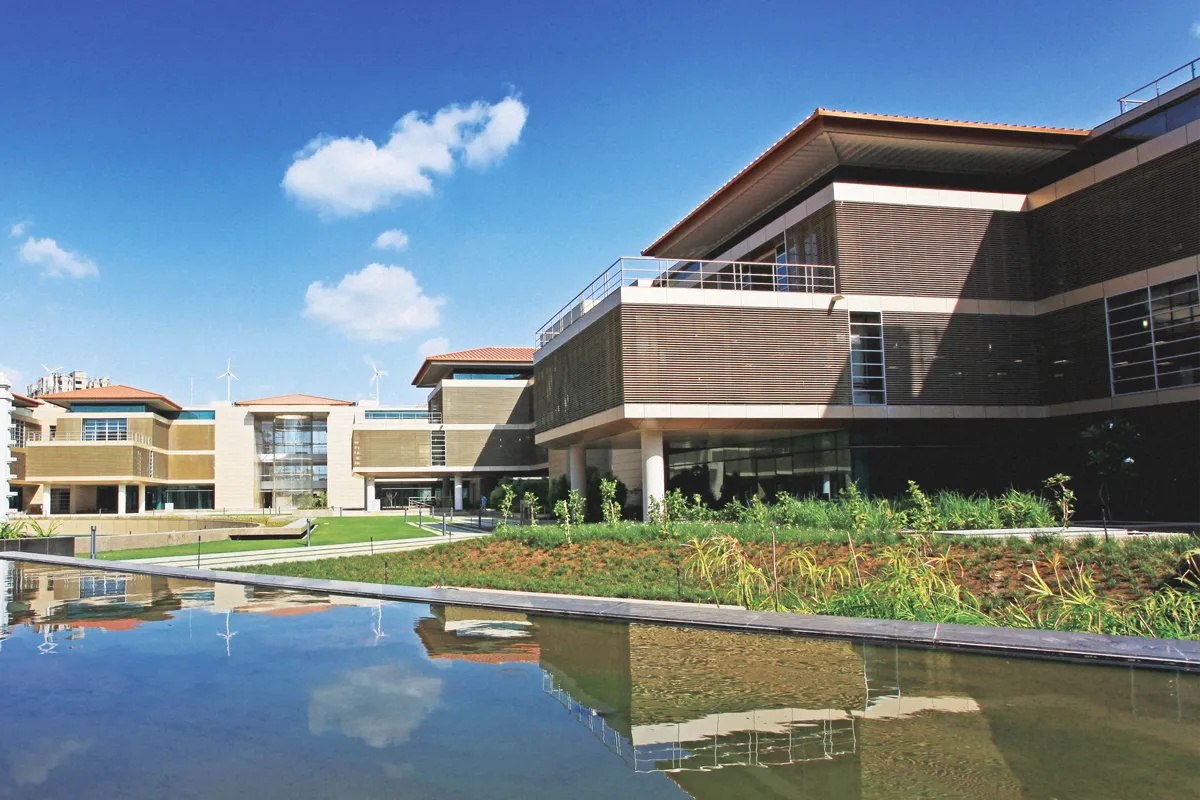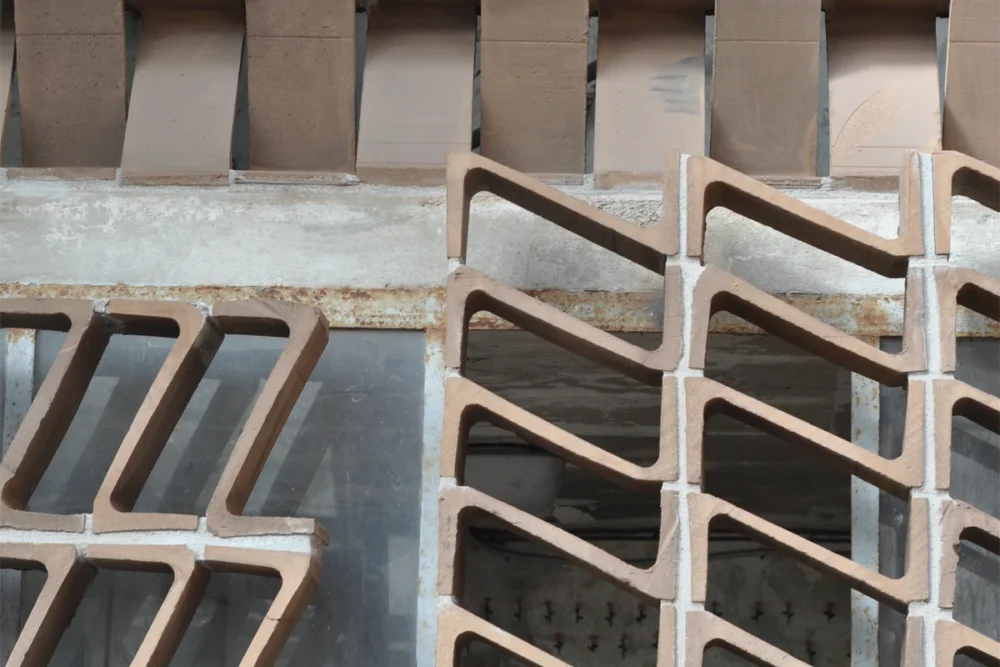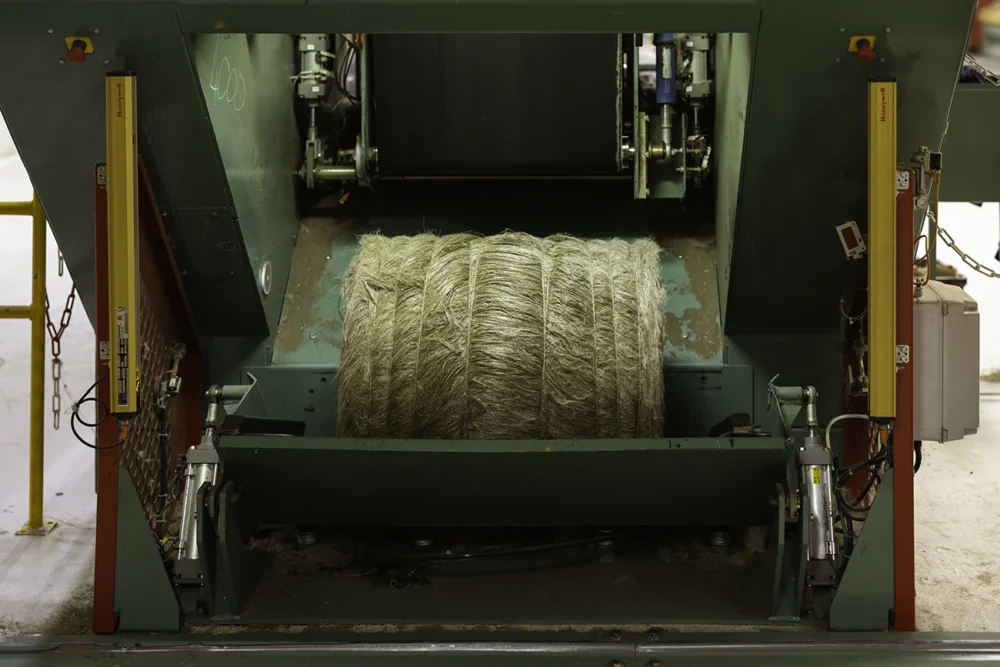
What Defines a LEED Certified Building? Core Characteristics and Global Examples
With buildings accounting to more than 40% of energy use, U.S. Green Building Council’s LEED initiatives shapes path towards reducing carbon footprints and energy consumption
What is LEED? Exploring its meaning
LEED, or Leadership in Energy and Environmental Design, is one of the world’s most respected green building certification systems, created by the U.S. Green Building Council (USGBC). It offers a comprehensive framework for designing, constructing, and operating buildings and communities that are energy-efficient, resource-efficient, and environmentally sustainable.
Rising costs associated with energy, utilities, and construction operations are prompting architects and developers to rethink how buildings are conceived and constructed. Sustainability has become a major driver, shaping the way buildings are planned and integrated into their surroundings. An aspect of this innovation is addressing the roughness of building surfaces, which can influence energy efficiency, airflow, and the accumulation of pollutants, further affecting the environmental performance of structures.
Buildings are among the largest consumers of energy
In the U.S. and U.K., buildings account for 45% and 42% of national energy use, respectively, while in OECD countries, the figure is slightly lower at 31%. With such significant energy consumption, it’s no surprise that green building certification systems have gained widespread adoption. These systems aim to reduce a building’s environmental footprint by promoting energy efficiency, sustainable resource use, and healthier indoor environments.
U.S.-based Leadership in Energy and Environmental Design (LEED), developed by the U.S. Green Building Council (USGBC) in 1998, has since become one of the most recognized and widely adopted systems. Other countries have followed suit, creating their own standards, including Korea’s Green Standard for Energy and Environmental Design (G-SEED), Australia’s Green Star, and Japan’s Comprehensive Assessment System for Built Environment Efficiency (CASBEE).
LEED: Aligning with Consumer Expectations
Achieving LEED certification is a rigorous process, involving evaluating a project whether a building, home, or entire community against a set of sustainability criteria. To earn certification, a project must meet specific prerequisites and accumulate points in categories like site development, water conservation, energy efficiency, materials selection, indoor air quality, and innovation in design.
Designing with LEED in mind offers multiple advantages, from meeting the increasing market demand for sustainable solutions to ensuring compliance with evolving environmental regulations. As consumers, businesses, and governments demand more eco-friendly products, aligning with LEED standards gives companies a distinct competitive edge. LEED certification not only helps meet these consumer expectations but also provides a clear path to comply with government regulations and green building codes that are becoming the new norm.
The environmental benefits of LEED go beyond compliance and marketability. Buildings and products designed to meet LEED standards are engineered to minimize their environmental impact across their entire lifecycle. This includes reducing energy and water consumption, lowering carbon emissions, and using materials that are sustainable and responsibly sourced. By adopting LEED practices, developers can significantly cut down on waste, resource use, and pollution, all while contributing to the global effort to combat climate change and environmental degradation.
LEED: Road to Long-term Savings
LEED-certified buildings are not just eco-friendly; they are also highly efficient in terms of energy and resources. This translates into significant cost savings over the life of the building. By designing products that help achieve LEED certification, companies can support builders and property owners in reducing their operating costs through lower energy and water consumption, decreased maintenance needs, and longer-lasting products.
The growing focus on sustainability is driving shifts in the construction industry. Governments worldwide are implementing policies, laws, and regulations that require the integration of sustainable practices into building design and construction. This movement is not just about energy efficiency but encompasses a broader vision of sustainability, which includes environmental, social, and economic factors.
In the wake of the 1970s energy crisis, building regulations began focusing heavily on limiting energy consumption, marking the beginning of a new era in building standards. Over time, this emphasis on energy efficiency became a key metric for sustainability. According to the Intergovernmental Panel on Climate Change (IPCC), buildings with sustainable features have the highest potential for energy savings. This underscores the critical role that sustainable design plays in reducing global energy consumption and combating climate change.
However, as the concept of sustainability has expanded, energy consumption is now seen as just one piece of the puzzle. Today’s approach recognizes that the sustainability of a building involves multiple dimensions; the roughness of exterior surfaces, thermal performance, energy use, and long-term durability. A comprehensive, multidisciplinary assessment now evaluates every aspect from the air conditioning system to the building’s façade while considering its broader impact on the surrounding environment.
LEED: From Certified to Platinum
The LEED system is flexible, offering points across several categories: sustainable sites, water efficiency, energy and atmosphere, materials and resources, indoor environmental quality, and innovation in design. There are four certification levels based on points earned: Certified (40-49), Silver (50-59), Gold (60-79), and Platinum (80+).
First launched in 1998, the LEED rating system has evolved through various versions, with LEED 2.0, 2.1, and 2.2 released between 2000 and 2005, refining the standards further and as demand for eco-friendly buildings rises. These innovations not only boost performance and durability but also contribute to environmental sustainability, giving companies a competitive edge in a rapidly evolving market.
Which are the Leed Certified buildings?
Shanghai Tower, Shanghai, China
LEED v4 Platinum
Soaring 1,300 feet (632 meters) above Shanghai’s financial district, the Shanghai Tower stands as a beacon of modern engineering and innovation. As the second tallest building in the world, it commands attention with its silhouette and features. The skyscraper lays claim to being the planet’s greenest, earning LEED Platinum certification when it fully opened in 2016.
Persistent inoccupancy, fire safety concerns, and awkward floor plate designs have cast shadows over its achievements. Yet, the Shanghai Tower shines in sustainability, integrating 43 advanced green technologies. These include renewable energy systems and lush landscaping that naturally cools its interiors, while its spiral design work together to reduce wind load and enhance stability.
The tower consumes 21% less energy than conventional buildings of its size, cuts its carbon emissions by 37,000 metric tonnes annually, and has saved approximately US$58 million in material costs.
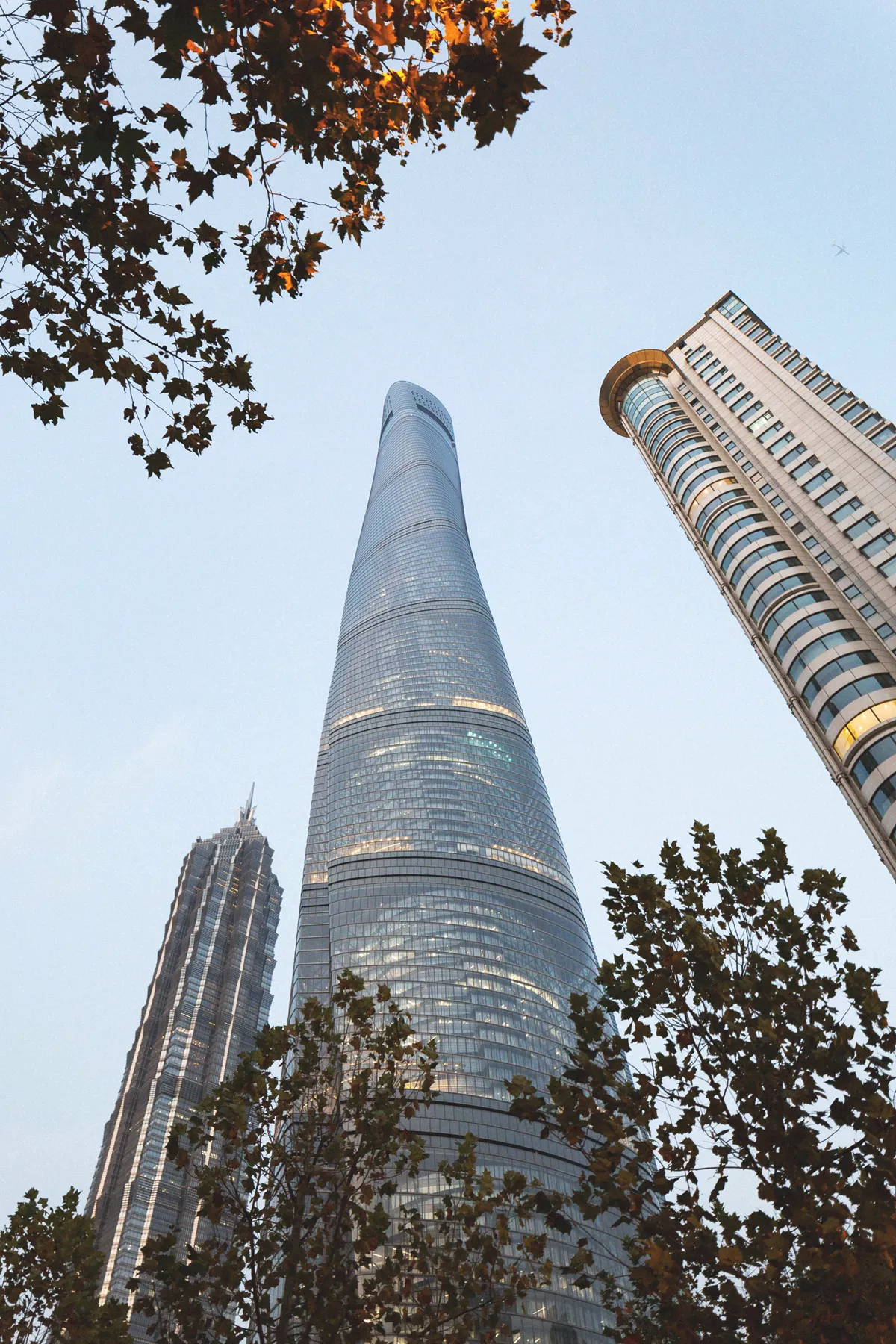
Olympic House, Lausanne, Switzerland
LEED v4 Platinum
Inspired by the dynamic movement of an athlete, Olympic House is celebrated as one of the most sustainable buildings in the world. The design blends architectural and sustainable commitments, considering every detail of the design, construction, and coordination processes.
Located near Lake Geneva, the building harnesses renewable energy by using heat pumps that repurpose lake water, ensuring both innovation and environmental responsibility. The architectural team prioritized reducing the project’s environmental footprint while maximizing sustainability, even during the demolition of the previous structure on the site.
Factors such as energy consumption, water usage, thermal performance, acoustics, material sourcing, and the local economy were analyzed to achieve the most sustainable solutions. The roughness of certain surfaces was intentionally incorporated to optimize thermal efficiency and enhance durability, further solidifying the building’s eco-friendly credentials.
Its standout features include green roofs and the reuse or recycling of 95% of materials from the former administrative building, ensuring a legacy of environmental stewardship for years to come.

The Crystal, London, United Kingdom
LEED v4 Platinum
Located on the waterfront at the western end of the Royal Victoria Docks in East London, The Crystal building is the first in the world to achieve both LEED Platinum certification and BREEAM Outstanding status.
The Crystal integrates a photovoltaic array that generates 20% of its total electricity demand. 10% of its water comes from the public main, with the rest supplied by on-site rainwater harvesting tanks and black water reclamation systems. Advanced operational monitoring, control, and automation systems for water and power are managed remotely from Frankfurt, Germany, ensuring efficient performance.
This green building features a crystal-shaped structure and utilizes six types of highly insulated glass with varying transparency levels to control solar heat gain and reduce energy consumption. Certain façade elements enhances its energy efficiency by disrupting airflow and minimizing heat transfer.
Additionally, the building’s corners are designed with a reflective coating on the outer glass to reduce heat absorption, while the inner glass remains transparent to allow natural daylight in, cutting down on lighting energy use.
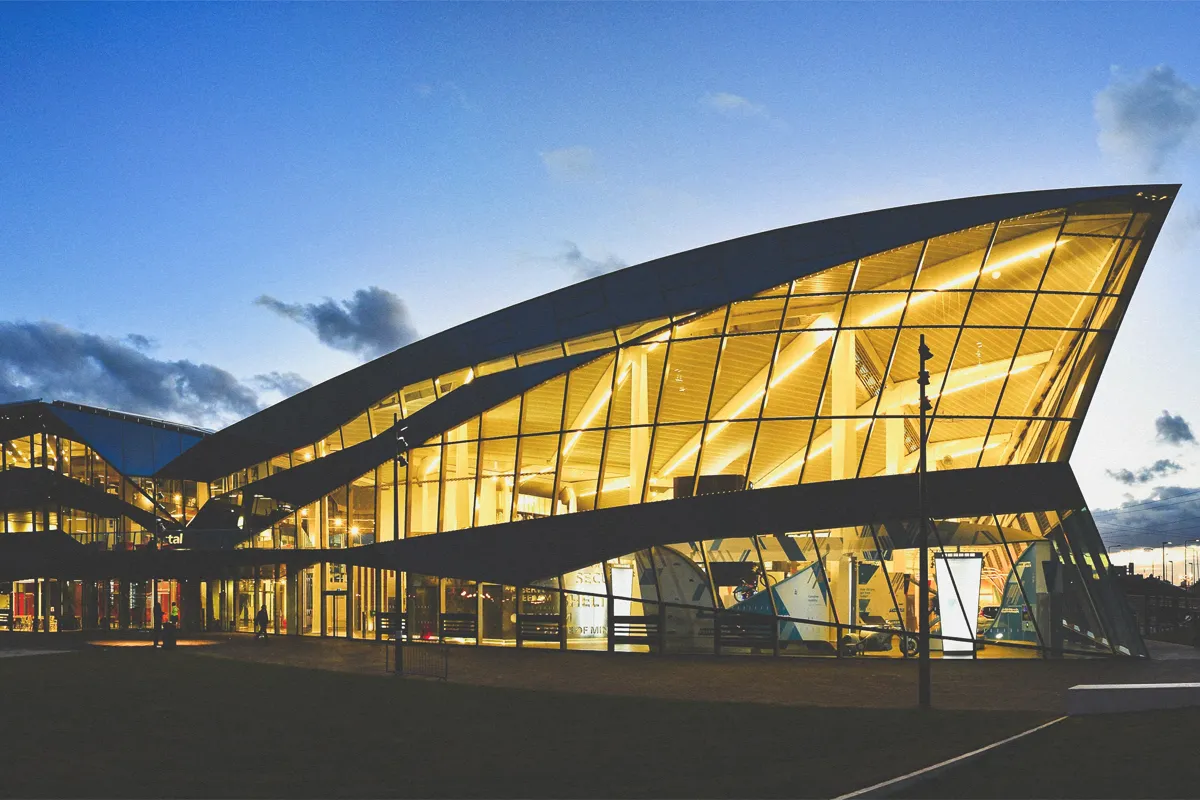
Suzlon One Earth, Pune, India
LEED v4 Platinum for Campus
Suzlon One Earth’s corporate campus is constructed entirely with recycled and non-toxic materials. The campus is divided into five interconnected buildings, each named after natural elements—Sun, Water, Sky, Trees, and Sea. Thus symbolizing harmony with the environment.
Certified as a LEED Platinum project by MGS Architecture of India, the campus generates 154 KW of electricity on-site through renewable sources, with 80% coming from wind and 20% from solar photovoltaic panels. An additional 4 MW of energy is supplied by Suzlon’s off-site wind farms, making the campus a model for energy self-sufficiency.
The project encompasses features such as rainwater harvesting, on-site waste conversion, and a garden-inspired office design that maximizes natural daylight. These efforts have not only reduced the building’s environmental impact but also cut operational costs by up to 35%.
